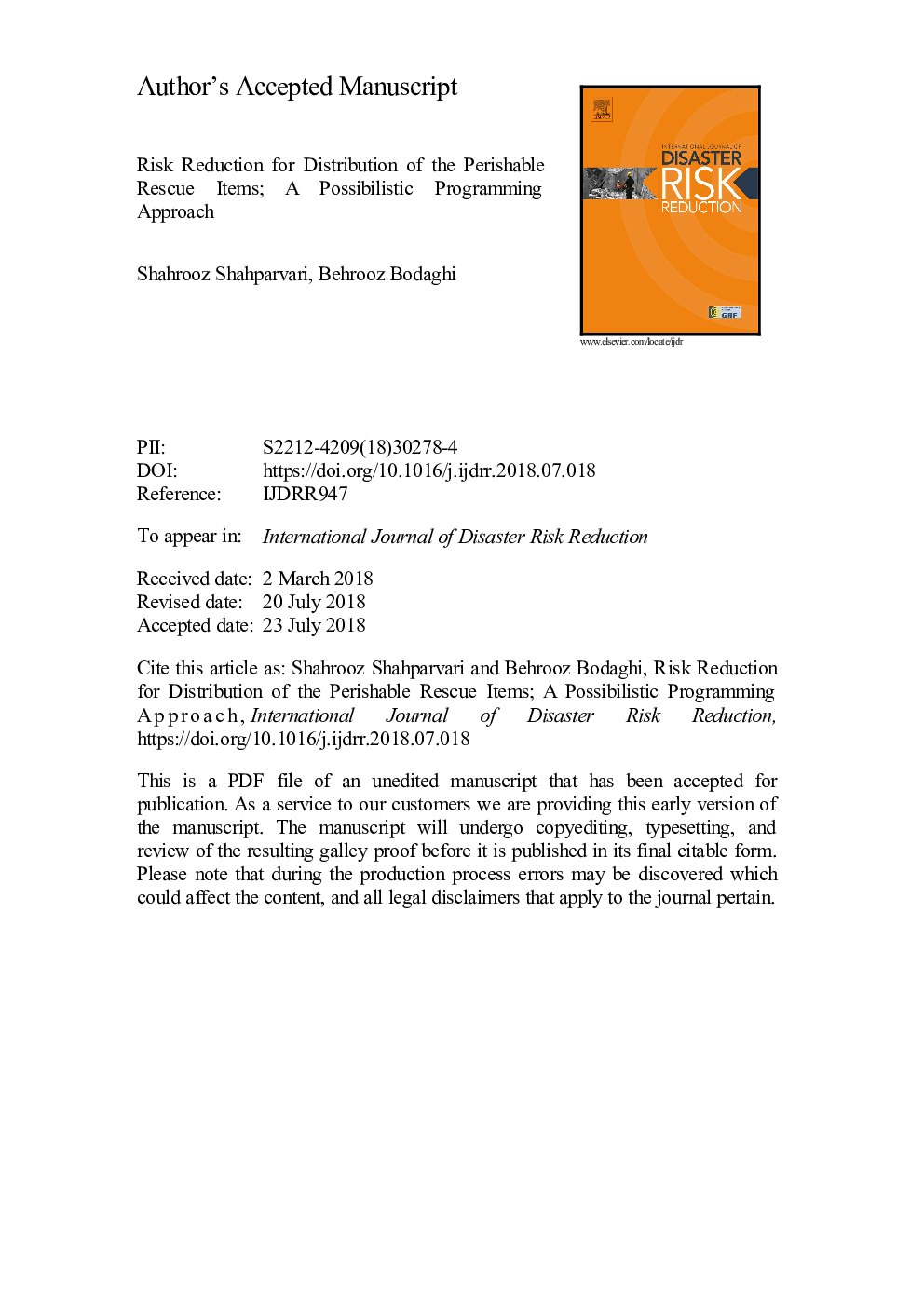| Article ID | Journal | Published Year | Pages | File Type |
|---|---|---|---|---|
| 11005295 | International Journal of Disaster Risk Reduction | 2018 | 39 Pages |
Abstract
The expedient transportation of relief supplies plays an undeniable role in minimizing human suffering and maximizing the survival rate in disaster-affected areas. Particularly during the 2009 Black Saturday bushfires in Australia, an investigation by the Victorian Bushfires Royal Commission revealed that resources such as medical teams and medical supplies were poorly coordinated during the initial response phase. Therefore, the aim of this study is to develop a mixed integer programming model to support tactical decision making in allocating emergency relief resources in the context of the Black Saturday bushfires. The proposed model uses historical data to determine the rescue vehicles' delivery loads and schedules based on vehicle capacity utilization, the supply of relief items and strict delivery time windows. Furthermore, a possibilistic programming approach has been employed to minimize the transportation disruption risk under uncertainty in the parameters and solve the model in a complex and unpredictable environment. To evaluate the reliability of the model, various sensitivity analyses have been applied while considering the priority level of the defined objectives. The results show that it would be possible to efficiently manage this emergency distribution context, even if one or two resources have very restricted delivery time constraints. However, disruption risk and priorities to the decision makers prove to impact resource utilization. The modeling outputs will be useful in the development of emergency plans and distribution coordination strategies to enhance rapid response to emergency relief distribution in disaster zones.
Related Topics
Physical Sciences and Engineering
Earth and Planetary Sciences
Geophysics
Authors
Shahrooz Shahparvari, Behrooz Bodaghi,
